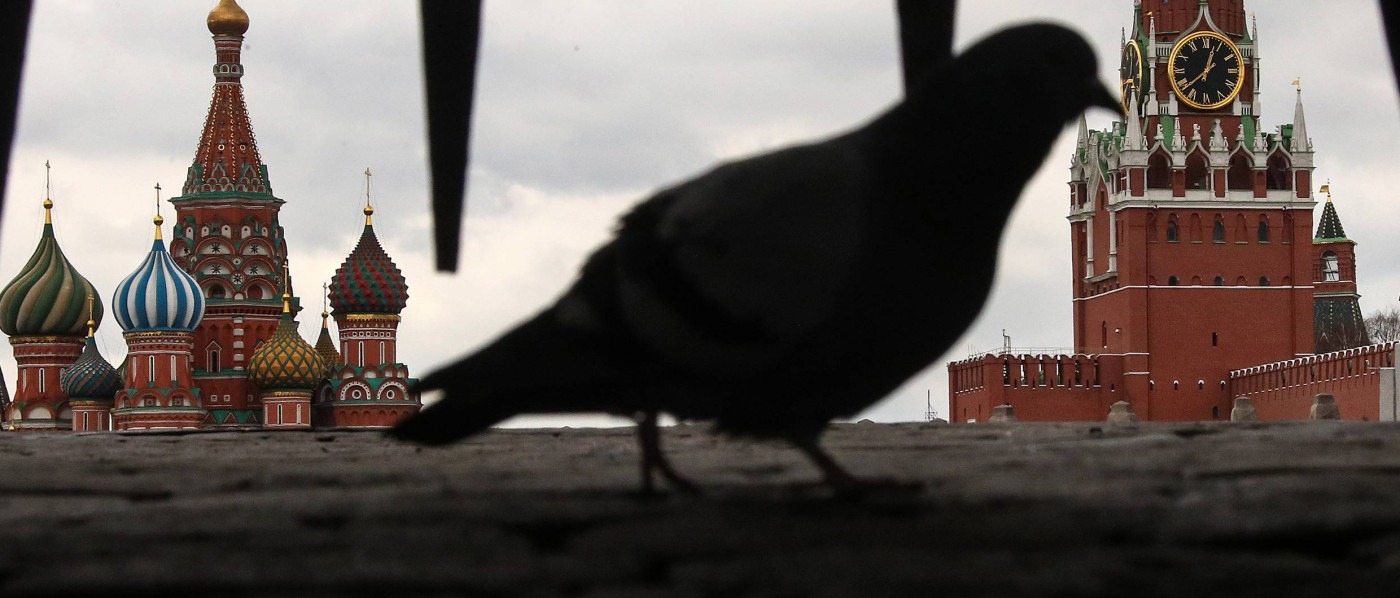The epidemic has brought massive changes to the global macroeconomic situation, and they are particularly dramatic in Russia. Before the pandemic, Russia’s economic growth rate matched its potential, or even exceeded it (albeit remaining moderate), and the unemployment level was below its natural level. Now, demand has clearly become insufficient, and unemployment is invariably expected to soar in the coming months. Thus, disputes over the expediency of monetary and fiscal stimulus have given way to a discussion of the tools and scale of stimulus.
Obviously, fiscal policy will undergo radical changes in the nearest future. This year, the significant budget surplus of recent years and that expected in 2020–2022 will undoubtedly turn into a deficit, and it is likely to remain this way for the next couple years. The fiscal rule, which used to be criticized for being overly rigid, now needs rethinking from a completely different perspective. The same applies to the discussion about the use of the National Welfare Fund (NWF).
The scale of shocks
In order to understand the fiscal choices available to the government in a time of crisis, it is of primary necessity to assess how much of its budget revenue Russia will possibly lose.
According to experts, the newly-reached OPEC+ agreement is only a partial solution to the problem of oil surplus in the global market. The outlook of the US Energy Information Administration (which provides the most precise forecasts of the oil price dynamics) published on April 7 seems plausible; it argues that the average annual price of Brent will be $33 per barrel in 2020, and will rise to $46 in 2021. In this case, the average Urals price will be about $30 per barrel this year and $42 in 2021. Moreover, production and export of crude oil and petrochemicals will experience a significant downfall over the next three years as a result of both decreased domestic and external demand and OPEC+ agreements. Given the projected global demand and the agreements of the exporting countries, let us accept a relatively optimistic assumption that Russia’s production and export of energy commodities will decrease by 5% compared to the previous year. In an environment of expected large-scale decline of the world economy (up to 5% this year), the demand for other goods that Russia exports will also decrease.
We estimate that taken together, all the shocks to the Russian economy, namely, the downfall in oil prices, involuntary reduction of oil exports, capital outflow, the self-isolation regime, and Non-Working April, will lead to a 5% reduction in GDP in 2020. This is in line with the latest forecasts of Citigroup (a 4.6% decline) and McKinsey (a 3.8-10.2% decline).
The first three shocks are an amplification of what the Russian economy experienced in 2008–2009. Back then, oil prices fell by 35% in a year, and now, the annual decline is forecast to be 53%, and the expected decline of the world economy will be much more severe than during the global financial crisis (based on the aggregated purchasing power parity data from individual countries).
Nevertheless, according to our estimates, the impact of these three shocks on Russia’s GDP will be approximately three times less than during the global financial crisis: 4–4.5 p.p. compared to 13 p.p. in 2009. This is largely a result of the transition to the floating exchange rate regime, which helps maintain a competitive edge in the global market on the one hand, and on the other, avoid high devaluation expectations, which push up (according to the theory of interest rate parity) the cost of borrowed capital. Conservative fiscal policy pursued by the government has also played an important role in mitigating the effect of negative external shocks. A rather strict fiscal rule has allowed for an urgent fiscal response to the crisis due to the funds accumulated in the NWF and low level of state borrowing.
We estimate that the quarantine and self-isolation regime will add about 2.5 p.p. to the economic downfall.
Given that before the crisis the Russian economy was estimated to grow by 1.5–2% in 2020, all shocks together result in a 5% decline in GDP.
Estimating the scale of fiscal measures
A distinctive trait of the current situation – almost no revenue at all, especially in the most shock-prone sectors – poses a serious threat of mass exodus of small firms with no reserves from the market, leading to disruption of production chains, a sharp rise in unemployment, and increase in poverty. Almost all developed countries have adopted anti-crisis programs on an unprecedented scale, including a wide range of fiscal and monetary policy measures. Government support packages for citizens and businesses in most developed countries exceed 5% of GDP, and in some (e.g. the US) they account for over 10% of GDP. The general principle of these programs boils down to the notion that ‘it is crucial to provide full support to the economy and population on the scale needed, no matter the cost’. At the same time, the unprecedented magnitude of threats makes it not only necessary but often more economically advantageous to nip in the bud the key mechanisms of crisis transmission to all sectors of the economy.
The anti-crisis programs of most developing countries are much more modest, which is due not so much to the lower level of support required as to the very limited funding available. Unfortunately, the answers to the questions ‘how much should the anti-crisis measures cost?’ and ‘how much can the country finance?’ rarely coincide.
What could the volume of the anti-crisis package in Russia be, given the needs and options of the fiscal response?
The combination of several shocks requires the use of a wide range of complementary instruments to support the economy: some are designed to compensate for the contraction of demand, while others are intended to support sectors, firms, and families that have been hit. For this purpose, all channels should be used simultaneously: easing of monetary policy (both by reducing the key rate and by buying government bonds), government loan guarantees, tax and loan payment extension. Priority should be given to preventing as many viable small and medium-sized firms as possible from winding-up, preventing massive layoffs, and providing support to citizens left with no sources of income.
To roll out these anti-crisis fiscal support measures, the government will need at least 3–4% of GDP in the form of additional budget expenditures and tax cuts this year. However, preference should be given to the most effective measures that can be implemented quickly. In particular, the proposals to give a certain amount of money to all citizens look controversial – when resources are limited, it is important to focus on helping those who need it the most.
Estimating budget losses and reserves
If we compare the estimated expenditure for the necessary support measures with the financing options, the situation in Russia looks paradoxical at first glance. So far, the announced direct government spending on economic support can be estimated at 1–1.5% of GDP, which is almost ten times less than the funds accumulated in the NWF as of April 1, 12.9 trillion rubles, or 11.5% of GDP.
To give a precise estimate of potentially available resources for the anti-crisis program, one should first calculate the liquidity of the NWF. To do this, it is necessary, first of all, to subtract illiquid funds and the money for buying Sberbank from the 11.5% of GDP, after which, the available funds will total 8% of GDP.
Next, we must take into account that the huge projected losses of budget revenues this year should be compensated for.
Our estimates show that under the above assumptions, the budget system (including federal, regional, municipal level and extra-budgetary funds) may miss out on 7.1 trillion rubles, which is equivalent to 6.3% of budgeted GDP. At the same time, the equivalent of 2.1% of GDP should go to the NWF; all this considered, to fund the public spending planned for 2020 alone, the government will need the equivalent of 4.2% of GDP. This includes about 1.5% of GDP of lost oil and gas budget revenues since the market price is below the base level; according to the law, the NWF should compensate this amount automatically.
The Budget Code does not provide for coverage of the other losses with NWF funds, but, the government does not have many options here. In this situation, both sequestering the federal budget and cutting social expenditures are inconceivable. Thus, the lost non-oil federal budget revenues of about 0.8% of GDP and social contributions – accounting for an additional 0.5% of GDP – will somehow be compensated by the government.
As for lost revenues at the regional level, amounting to 1.5% of GDP, the most likely is that the government will provide financial support to the worst affected regions in the worst situation. The regions will probably compensate for part of the uncovered losses through their internal reserves or borrowings, and another part through spending cuts.
Offsetting all the lost budget revenues may require the sum of about 3.5–4% of GDP provided by the NWF or acquired through additional borrowings.
Budget revenue shortfalls are very likely to continue in the coming years: although growth will gradually resume, it will steadily fall behind previous projections, so, in 2021–2022, GDP may be 7–8% lower than projected. This means a shortfall in non-oil and gas revenues of 2–2.5% of GDP annually. At the same time, the NWF is unlikely to be replenished in this period: oil prices will hardly exceed the base price set out in the fiscal rule.
At the same time, government spending cuts or tax increases are very undesirable, as they may undermine post-crisis recovery. We should also remember that the coronavirus pandemic, due to its unique nature, may develop in an unpredictable way, so it may take a lot of time to get back to normal economic activity and for the oil market, to recover at least partly. Given such a high level of uncertainty, it is crucial to keep an ‘emergency stock’ of liquidity in the NWF equalling at least 3% of GDP. Combined with the expected additional budget revenues received by the Bank of Russia from Sberbank’s sale next year, this will provide a sufficient safety net to cover state spending commitments in 2021–2022.
Then, if the government decided to cover all lost budget revenues with the NWF and to keep a ‘rainy-day fund’ equalling 3% of GDP, there would be no more than 1.5% of GDP of funds left for financing the anti-crisis fiscal measures, i.e. approximately as much as has been allocated to date.
Breaking the rules
However, this does not mean that support measures should be limited to the ‘available’ funds of the NWF. Additional funds for anti-crisis measures can be partially accumulated through redistribution of resources within federal and regional budgets.
The government has another card up its sleeve, i.e. low level of public debt: as of March 1, it amounted to a mere 14% of GDP. The IMF considers this factor to be an important element of the so-called ‘fiscal space’, namely, the ability to fully implement an anti-crisis fiscal policy if necessary. Indeed, with low debt, the government can increase its borrowing without risking undermining long-term macroeconomic stability. The problem is that Russian investors are likely to have limited opportunities to buy public bonds, while foreign investors are leaving Russia as they have already left other emerging markets.
It seems that having the Central Bank buy government bonds could be a solution in the current extraordinary situation. This would increase the money supply, but with a dramatic decline in domestic demand, excessive inflation growth is very unlikely.
Thus, we consider it advisable for the government to significantly expand the anti-crisis program, financing it through the NWF funds, domestic reserves, and debt issue.
It should also be borne in mind that full-fledged support for the economy will, firstly, prevent serious output contraction and, therefore, provide higher budget revenues in the future. Secondly, it will prevent problems in the banking system (or at least make some banks less likely to go bankrupt), whose resolution would cost the Central Bank and/or the government even more.
The scenario described would require derogation from the current fiscal rule, but it seems that in this situation, securing the future of business and solving urgent social problems is more crucial than the sanctity of the fiscal rule, despite the importance of it. Moreover, we estimate that it could be restored rather soon, as early as in 2022. This seems quite plausible, as the currently set base price of $40 per barrel at 2017 prices equals the expected oil price of the coming years.








